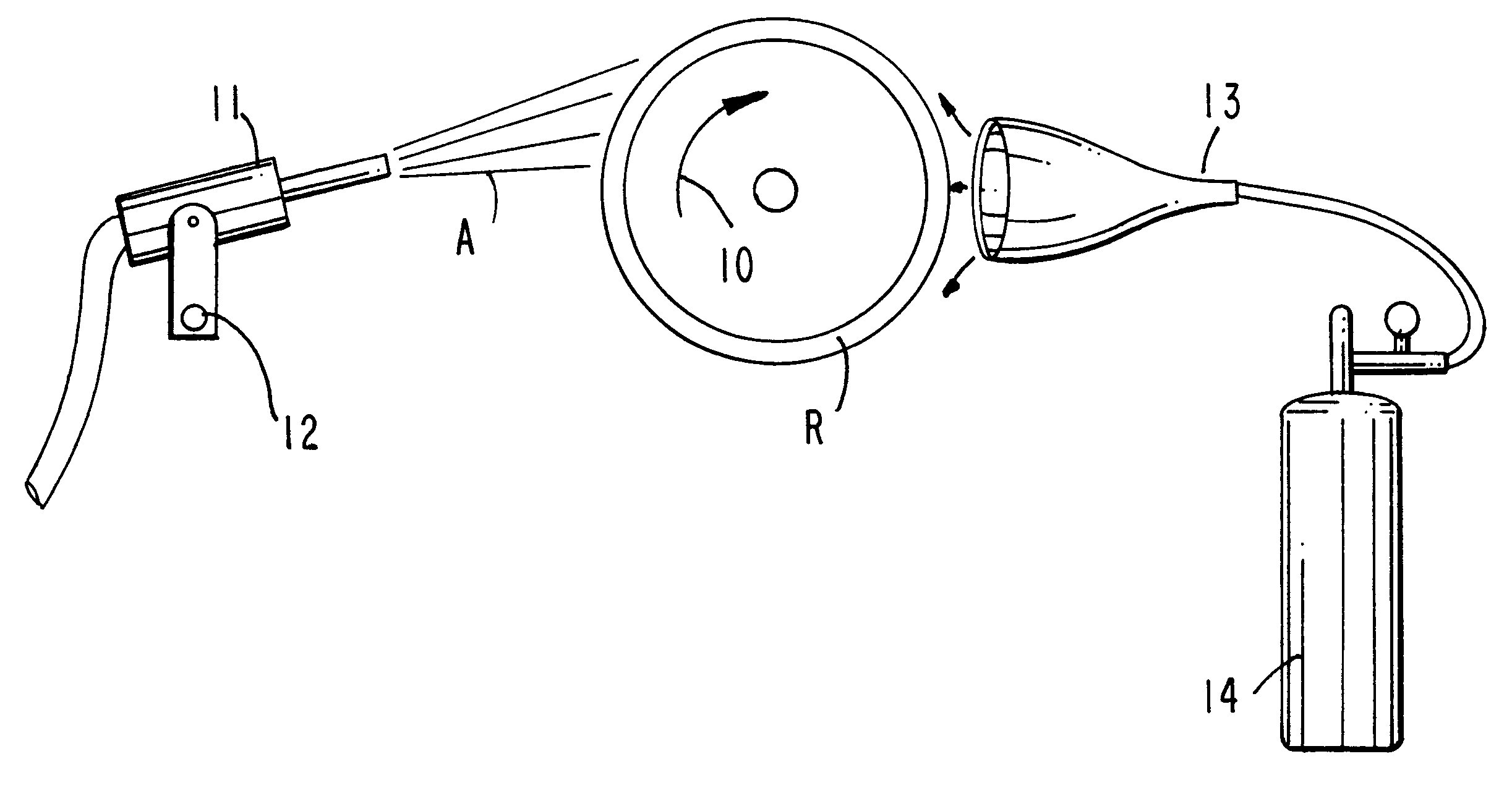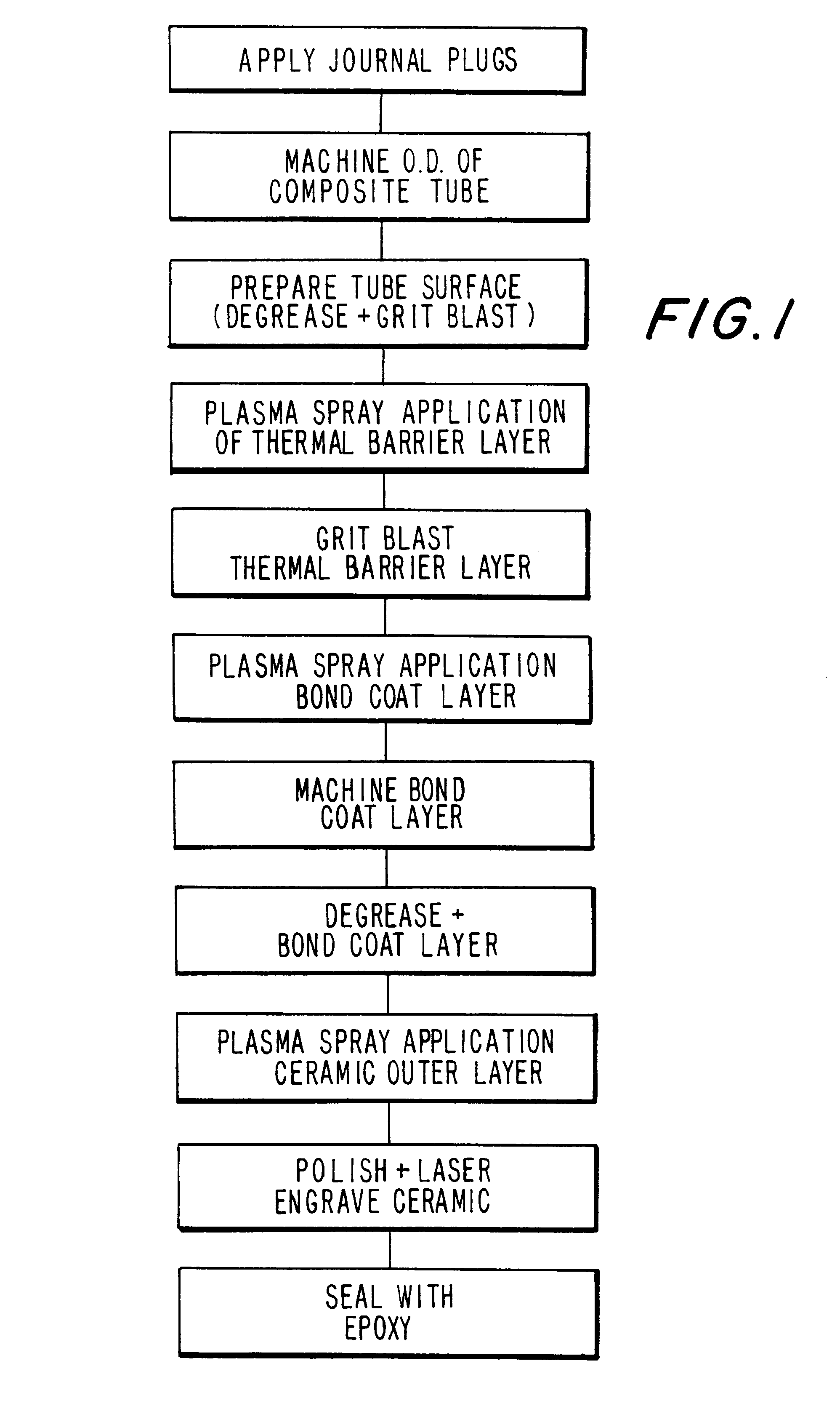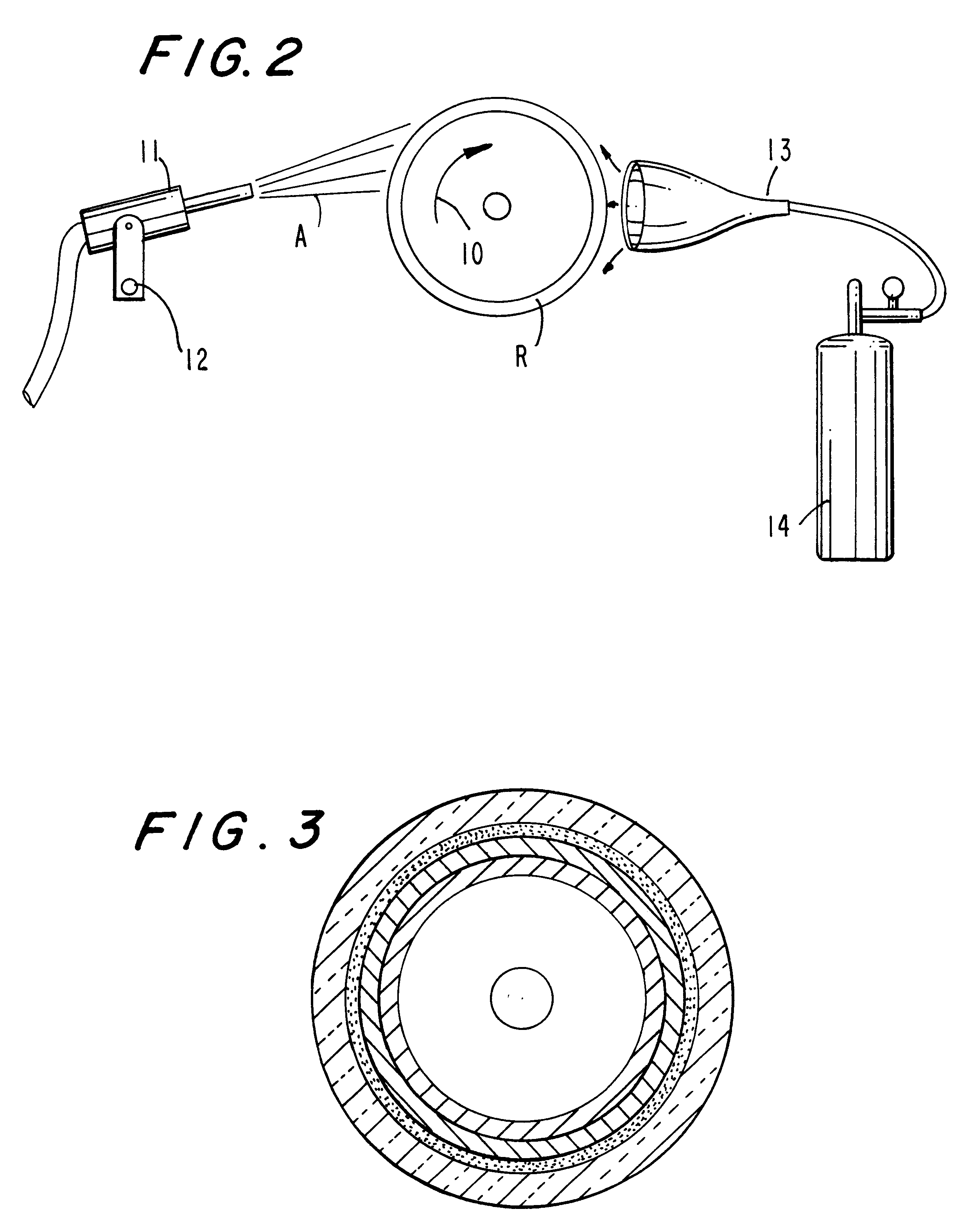Fluid metering roll and method of making the same
a technology of fluid metering and rolling pin, which is applied in the direction of portable power-driven tools, applications, and ways, etc., can solve the problems of rolling deflection, premature bearing wear, and difficulty in dynamic balan
- Summary
- Abstract
- Description
- Claims
- Application Information
AI Technical Summary
Problems solved by technology
Method used
Image
Examples
example 2
A carbon fiber composite roll of the characteristics noted above and dimensioned as before and formed with a zinc thermal barrier layer as previously described was overcoated with a bond coat comprised of nickel and chromium (80 / 20) by weight. A bond coat of 0.005 inches was formed utilizing Metco 9MB gun, 9MP power feeder nozzle GH; pick up shaft A; powerport 2 operating at electrical parameter of 70 volts 500 amps spray rate 10 pounds per hour. Gas pressure employed was 100 parts argon to 50 parts hydrogen, argon at 80 SCFH and hydrogen at 15 SCFH. Spray distance was 4.5 inches, surface speed of the roll was 400 surface feet per minute, the roll rotating 6 rotations per 1" traverse of the applicator gun.
The bond coat thus formed was machined, degreased, plasma sprayed as before.
While it is preferred to employ both a thermal barrier layer and a bond coat layer prior to application of the ceramic layer, it is feasible in some instances to apply the ceramic layer directly over a ther...
PUM
| Property | Measurement | Unit |
|---|---|---|
| temperature | aaaaa | aaaaa |
| weight | aaaaa | aaaaa |
| weight | aaaaa | aaaaa |
Abstract
Description
Claims
Application Information
 Login to View More
Login to View More - R&D
- Intellectual Property
- Life Sciences
- Materials
- Tech Scout
- Unparalleled Data Quality
- Higher Quality Content
- 60% Fewer Hallucinations
Browse by: Latest US Patents, China's latest patents, Technical Efficacy Thesaurus, Application Domain, Technology Topic, Popular Technical Reports.
© 2025 PatSnap. All rights reserved.Legal|Privacy policy|Modern Slavery Act Transparency Statement|Sitemap|About US| Contact US: help@patsnap.com



